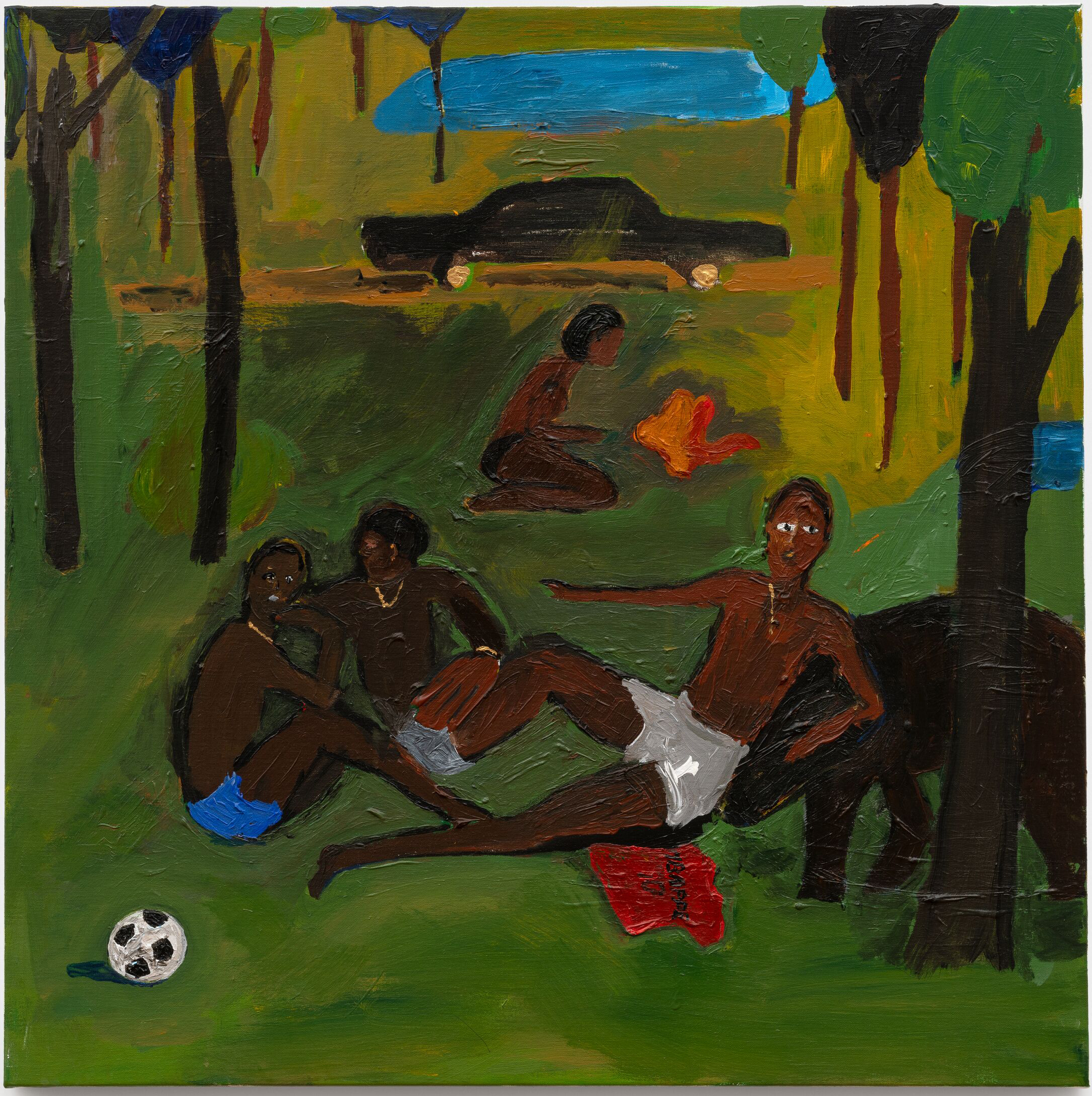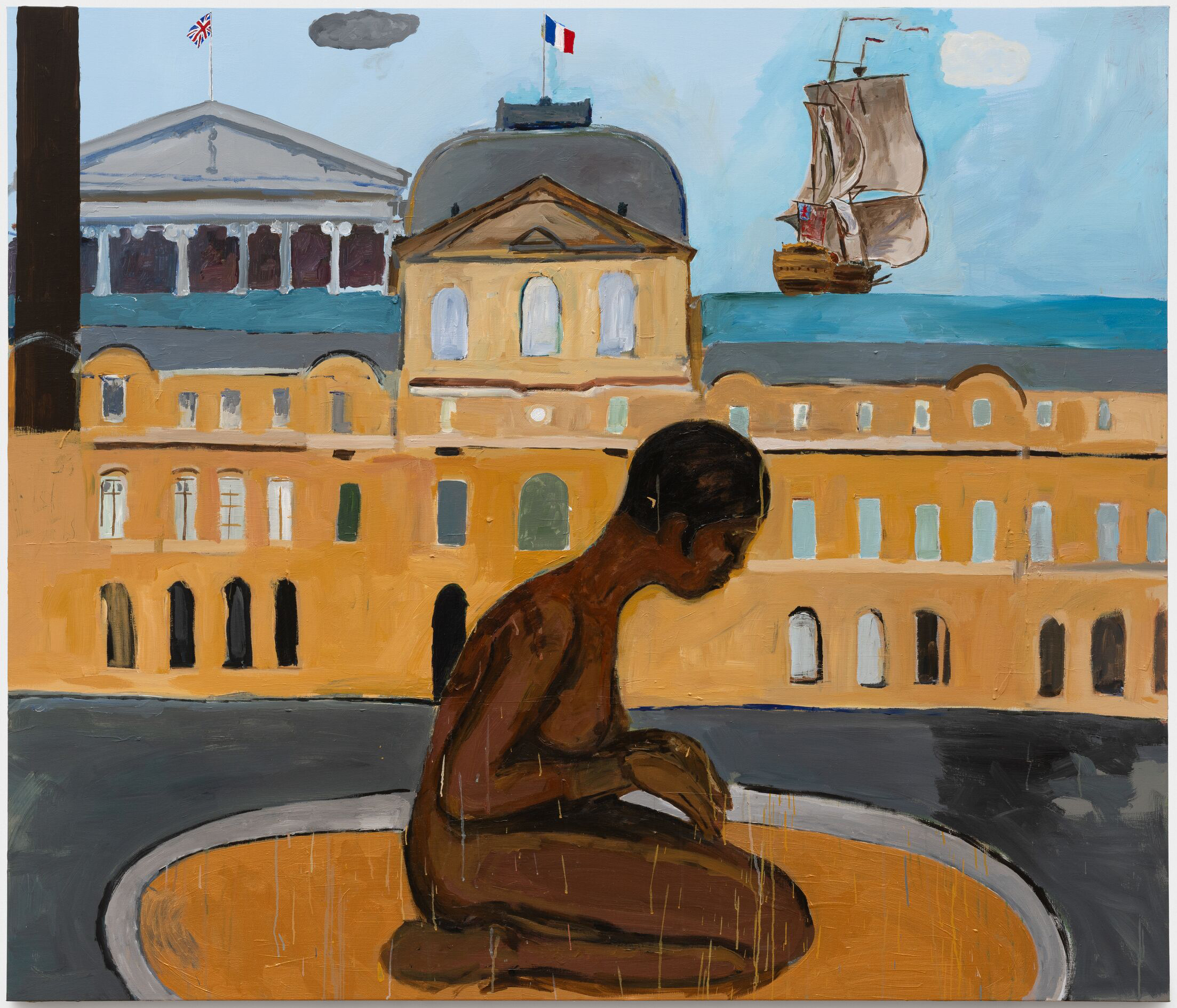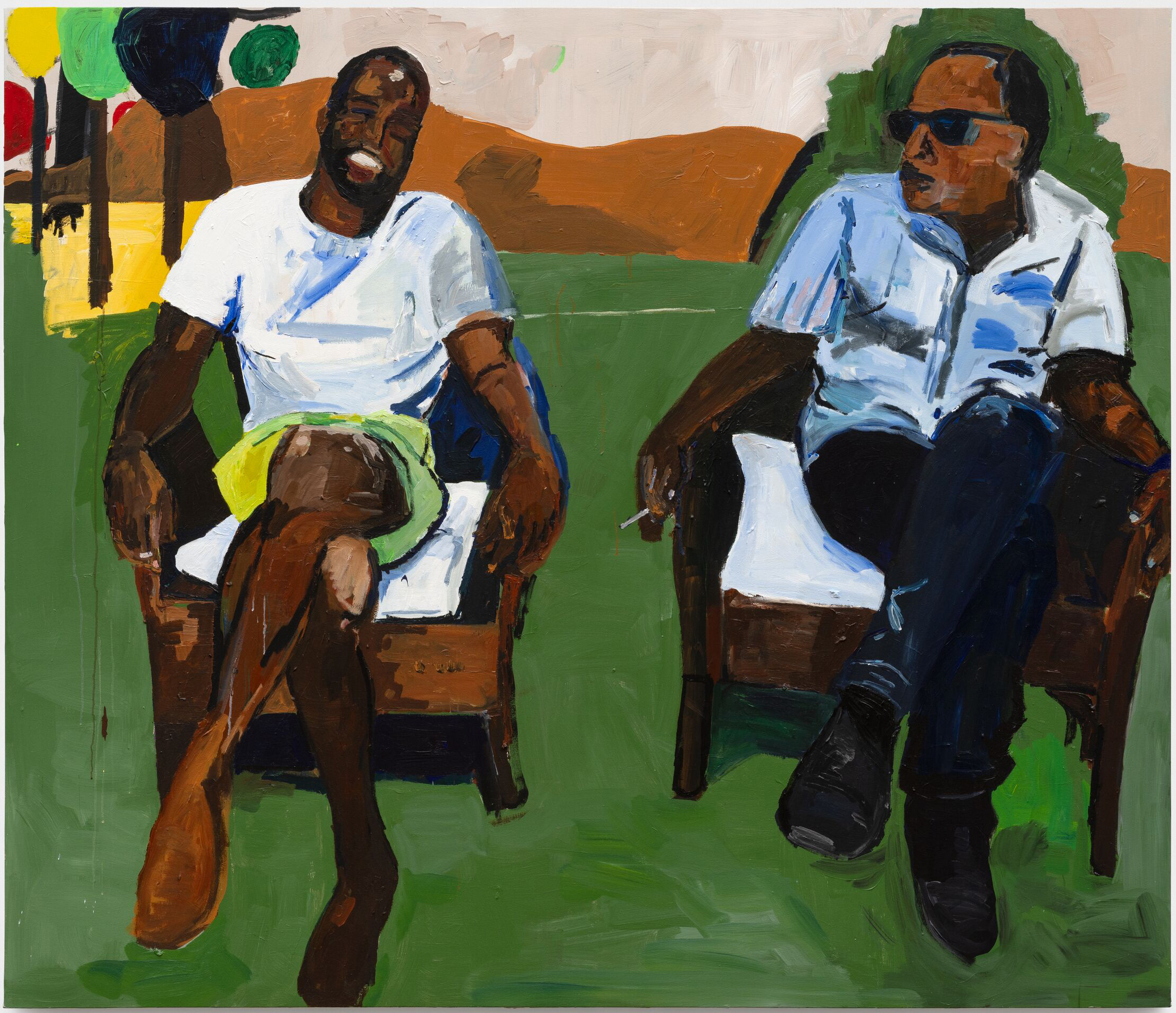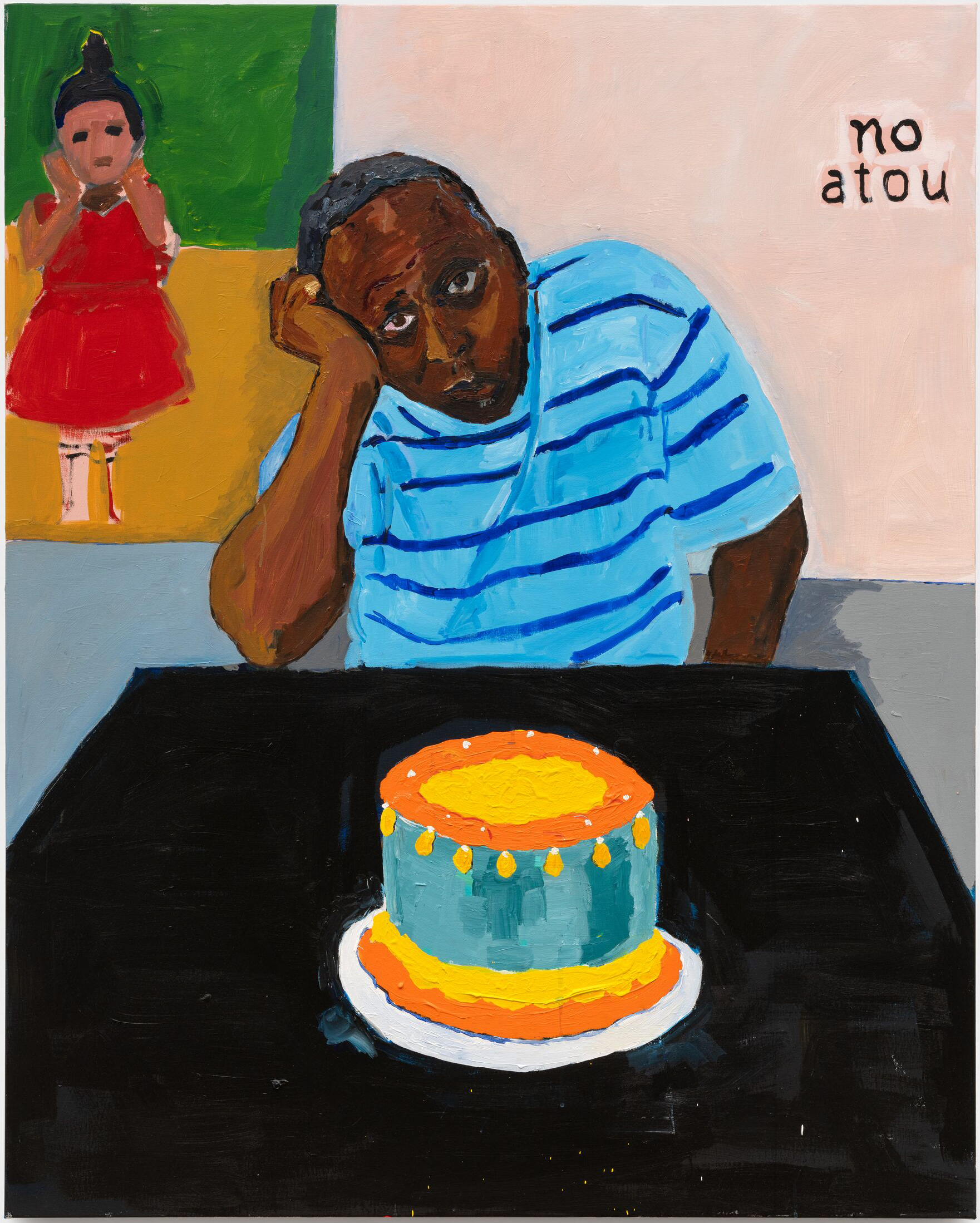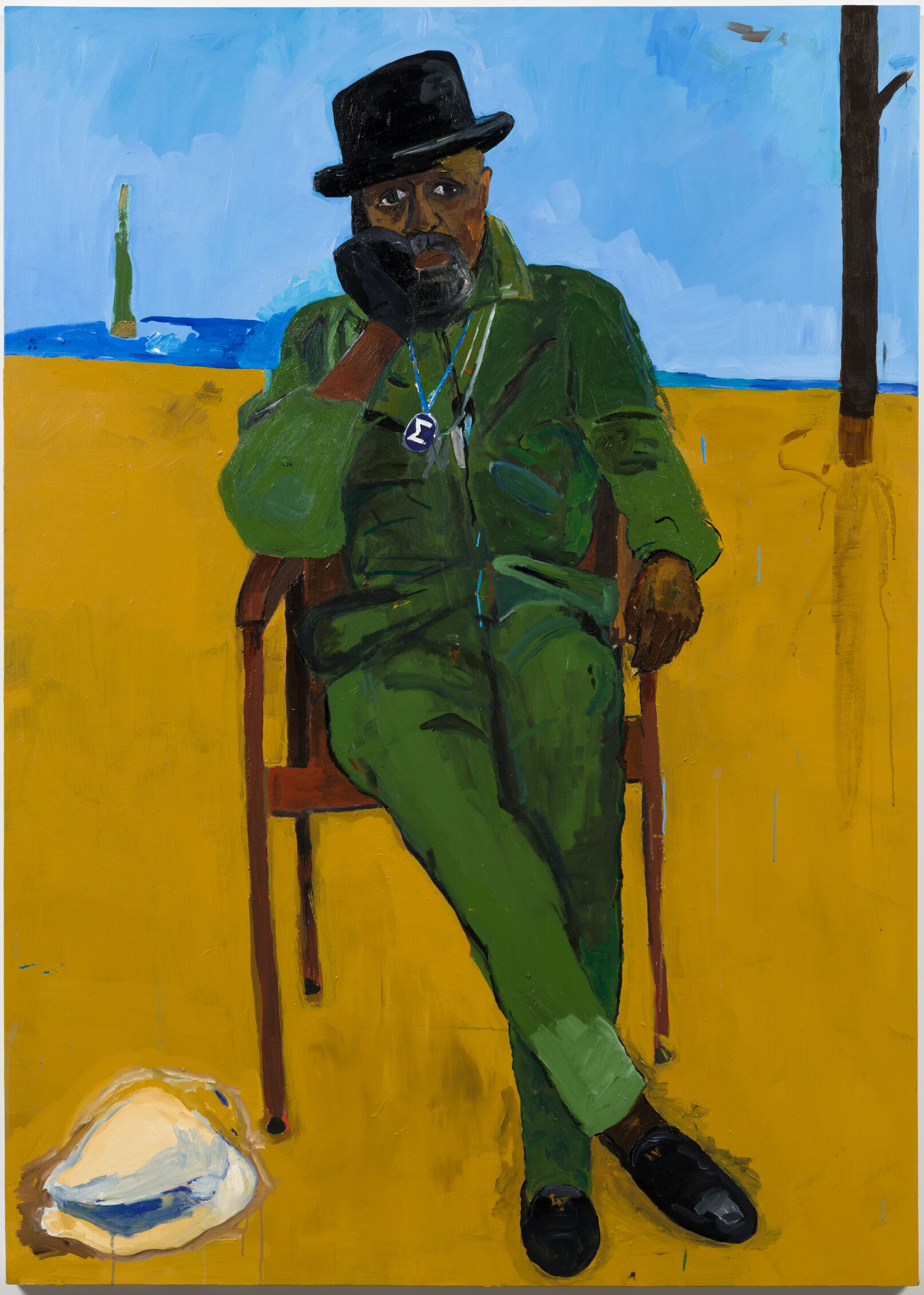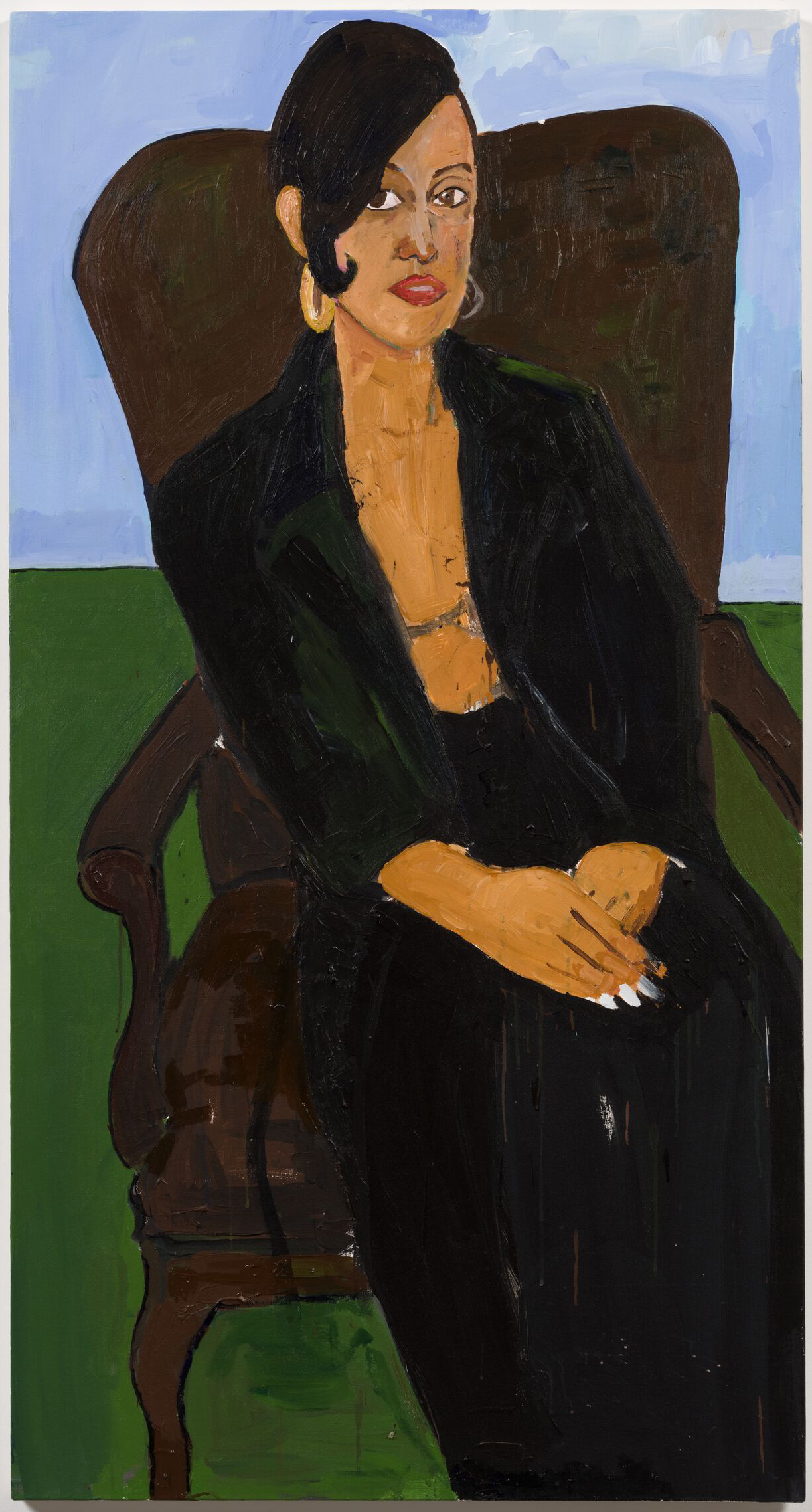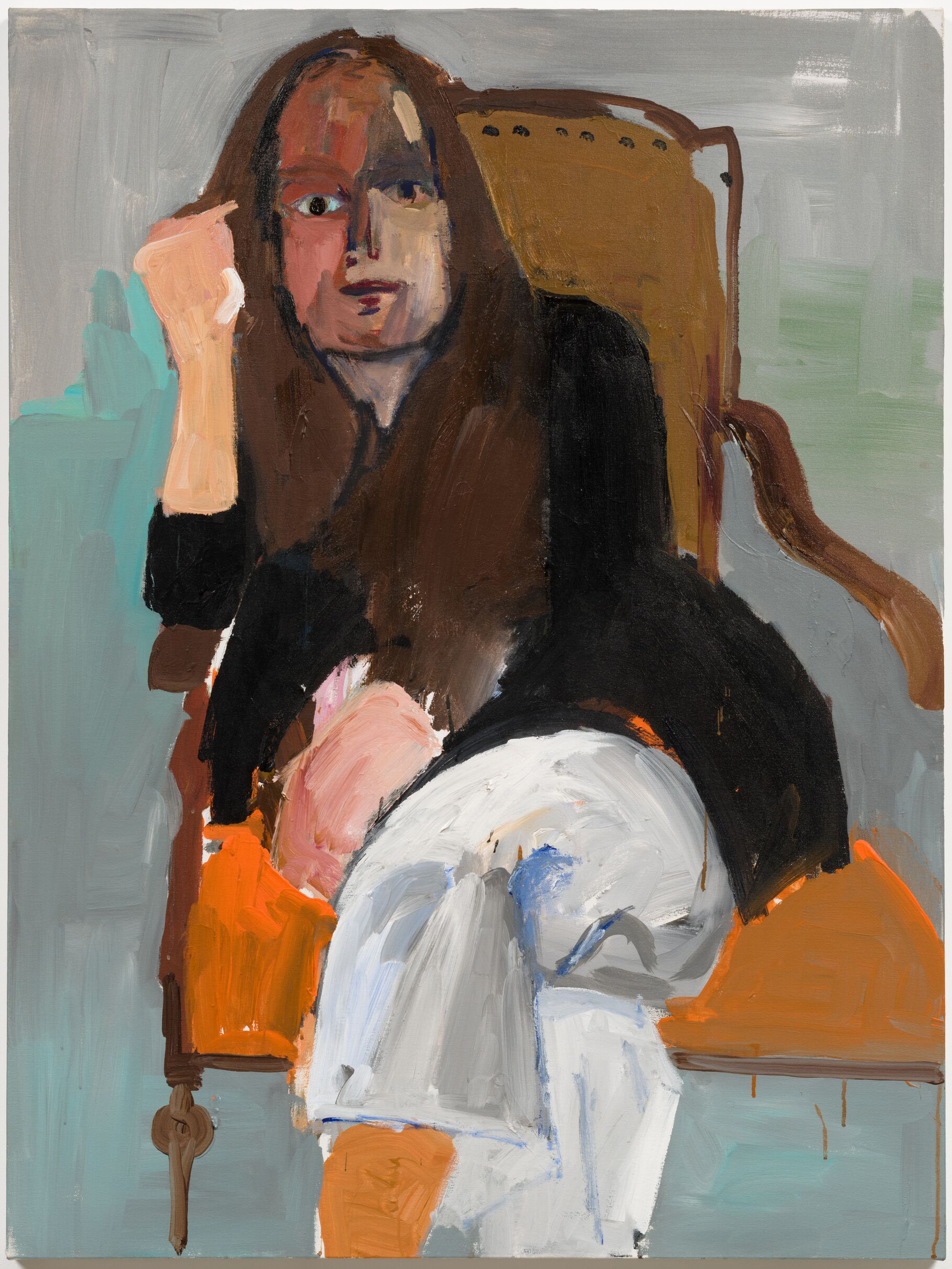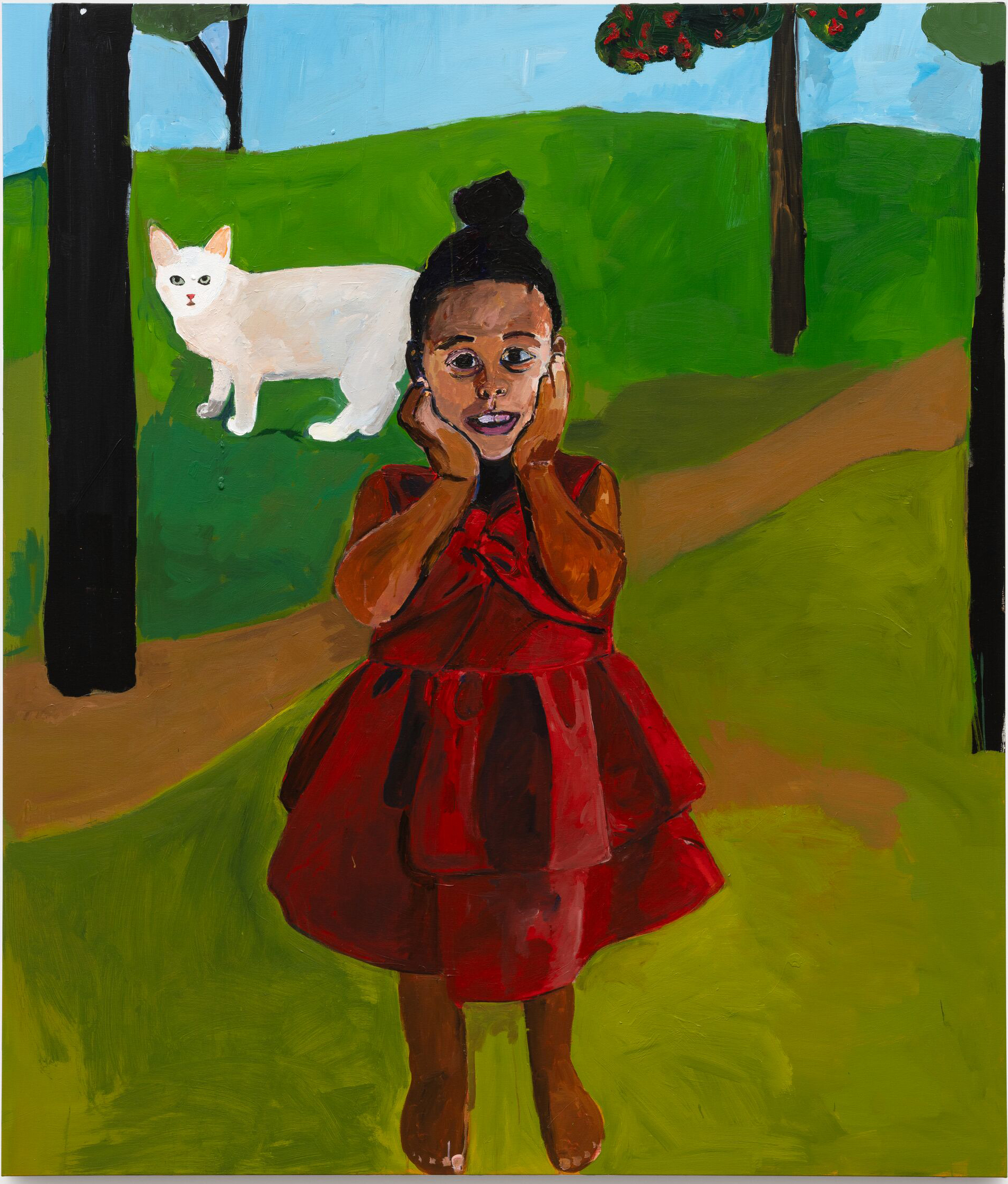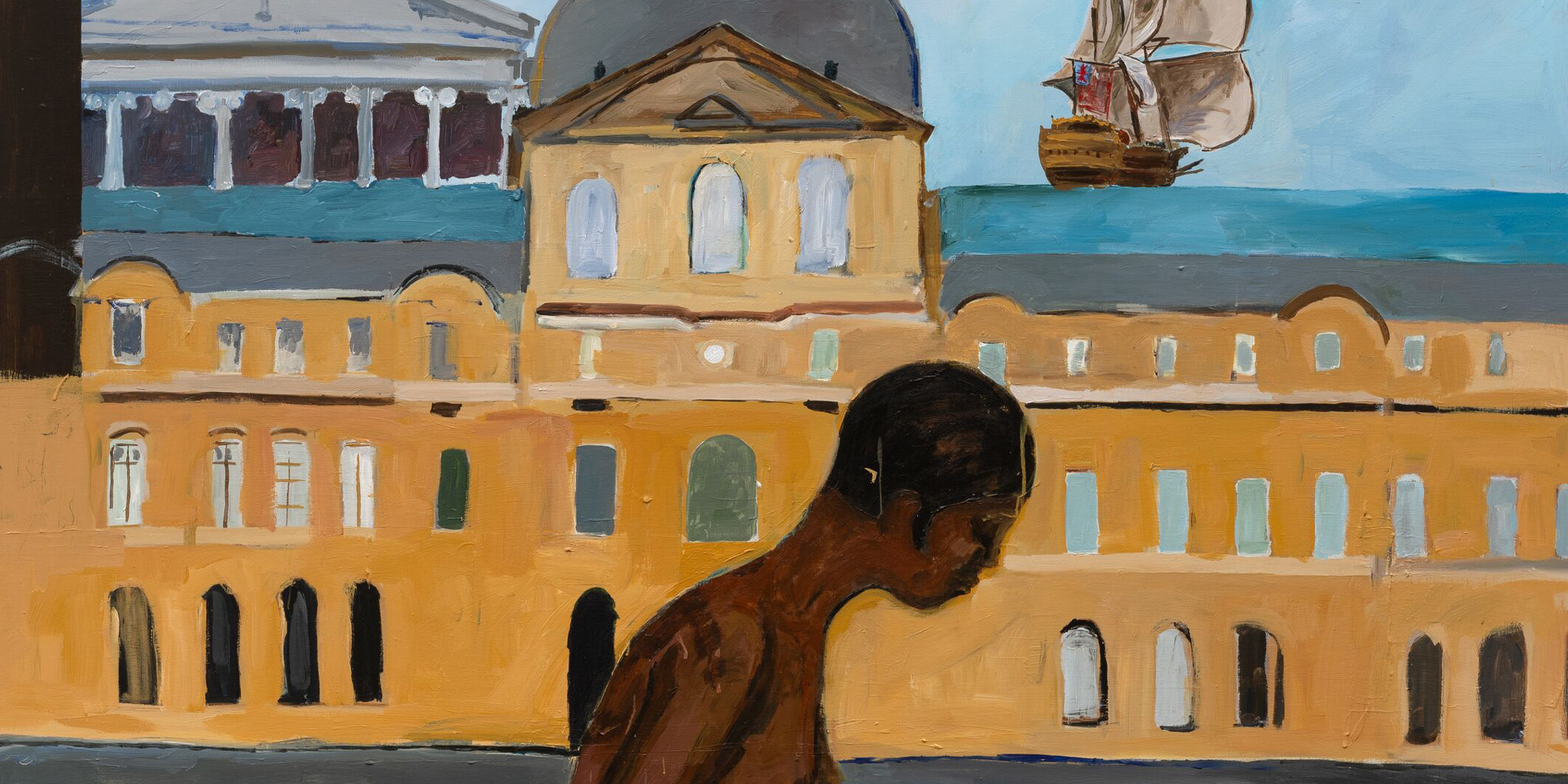
Henry Taylor
FROM SUGAR TO SHIT
14 October 2023 – 7 January 2024
Paris
Hauser & Wirth’s inaugural exhibition in Paris debuts new works by critically acclaimed Los Angeles artist Henry Taylor. Taylor’s exhibition in Paris, the artist’s first prominent show in France, comprises a wide range of over 30 paintings, sculptures and works on paper that encompass the remarkable breadth of his practice
Explore the exhibition
Throughout his four-decade long career, Taylor has consistently and simultaneously embraced and rejected the tenets of traditional painting, as well as any formal label. Combining figurative, landscape and history painting, alongside drawing, installation and sculpture, Taylor’s vast body of highly personal work is rooted in the people and communities closest to him, often manifested together with poignant historical or pop-culture references. In this exhibition, with a guiding sense of human connection, Taylor leads us through a multifaceted narrative.

In the lead up to this show, Taylor extended his studio practice to Paris for a residency in the city during the months of June and July 2023. During this time, Taylor has drawn inspiration from the unparalleled array of historical art collections contained in the city, such as the Musée d’Orsay where he was surrounded by the work of French impressionists, expressionists and fauvists who have inspired him since an early age. Taylor’s studied awareness of his art historical predecessors and and contemporaries is continually prevalent throughout his work, having gained influence from Pablo Picasso, Marcel Duchamp, Phyllida Barlow, Philip Guston, Gerhard Richter, David Hammons and Glenn Ligon, among others.

Sculpture plays an important role in this exhibition and as part of Taylor’s practice. The process involves energetically building, stacking and affixing a vast array of collected objects together, from bottle caps to toilet paper rolls, to create a holistic record of his everyday routine and the materials that define them. Referring to this highly intuitive process as ‘hunting and gathering,’ the artist is able to simultaneously merge multiple references—historic and contemporary—into sharp focus.
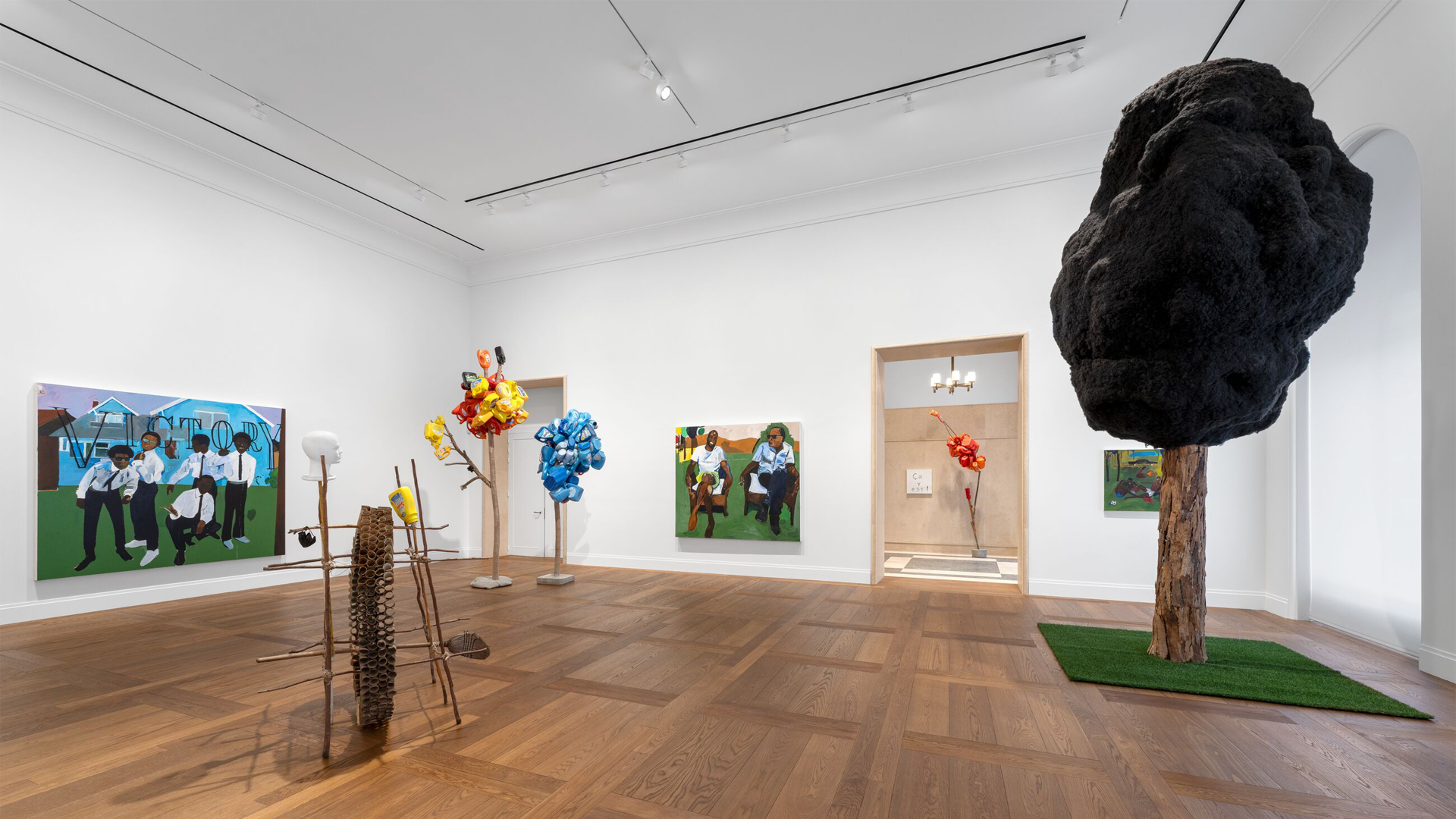
Examples featured in the Paris show include assemblages made using detergent and milk bottles, toilet paper rolls, furniture, among other objects, which recode the forms and symbolisms of found materials to comment on enduring art historical tropes, echoing an almost Duchamp-esque approach to readymade sculpture. When paired with Taylor’s paintings depicting various figures throughout history, these works reveal the artist’s voracious sourcing of subjects and materials, as well as his encyclopaedic command of historical knowledge. Also on view in the exhibition is a monumental sculpture entitled ‘One tree per family’ (2023), a towering 15ft tree trunk with a large afro for foliage.
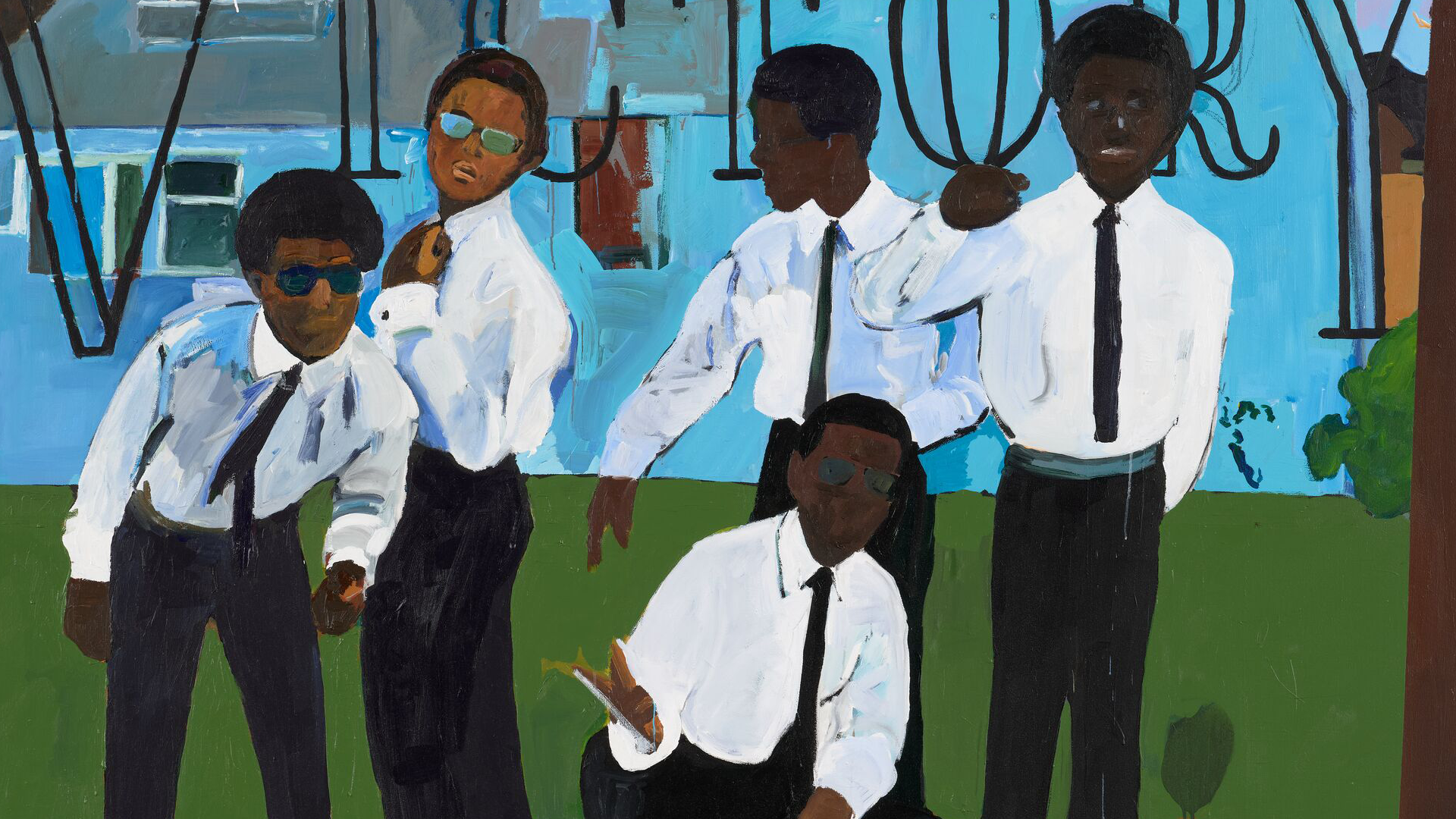
Taylor’s work is primarily about relationships and how they impact our lives. While people figure prominently in his work, the artist rejects the label of portraitist. The paintings in this exhibition include subjects from all walks of life and historical context, frequently featuring family members, as seen in ‘I got brothers ALL OVA the world but they forget we’re related’ (2023), a depiction of Taylor’s brothers and friends painted against a graphic backdrop displaying the word ‘VICTORY,’ resembling the logo of the classic American bubble gum brand. Taylor is known for his playful visual and verbal punning, as symbols slip between different representations in his work: the allusion to bubblegum is a nod to the subjects’ youth, while also celebrating their graduation day.
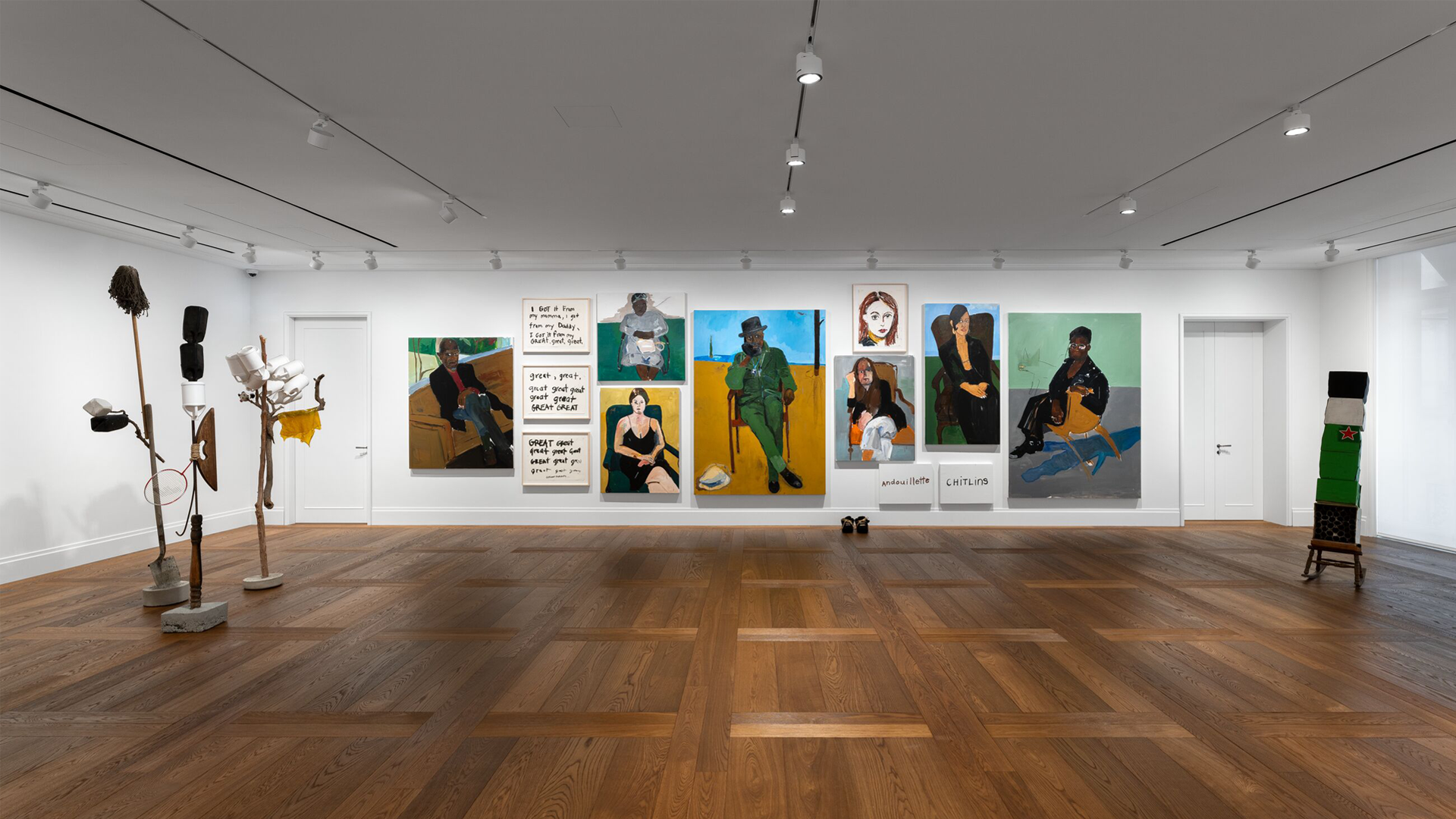
Additional works made during Taylor’s time in Paris include an homage to Josephine Baker, the American-born French dancer, singer, actress and civil rights activist painted in a kneeling pose foregrounding the Louvre and the British Museum, alongside a melancholy depiction of the artist on his birthday in his Paris studio alongside a painting of his daughter and the Tahitian slang phrase ‘no atou.’
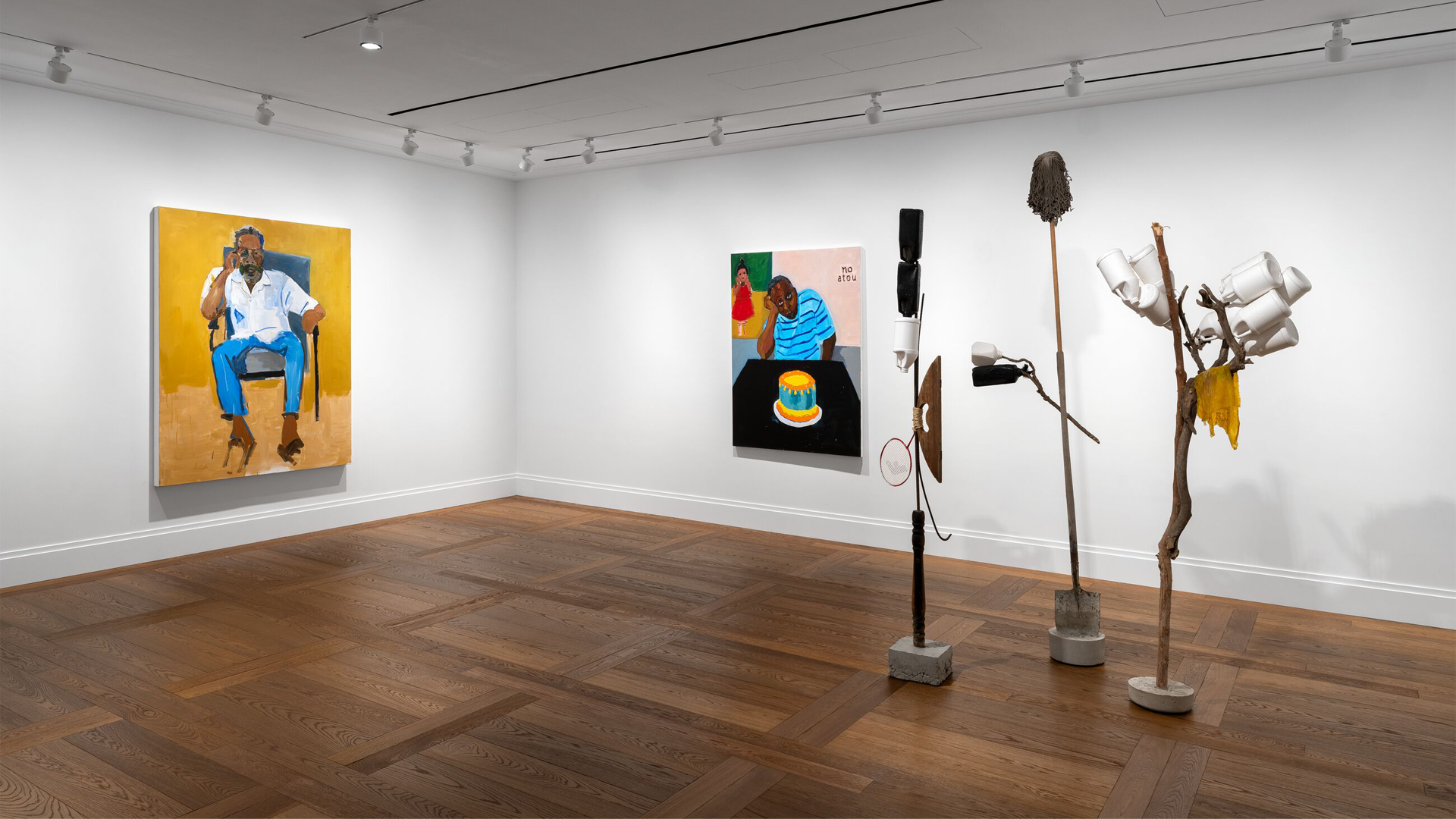
Taylor’s choice of subject—from memory and archival materials to the live sitter—is firmly dependent upon his sense of connection driven by empathy. His sumptuous depictions, painted rapidly and loosely, capture his subject’s nuances and mood with gestures and passages of flat, saturated acrylic colour offset by areas of rich and intricate detail. The intensity with which he paints is reflected by his brushwork: a network of kinetic strokes that seek to capture a feeling before it flees. Taylor’s subjects, which range from members of his community to symbolic objects representative of historical struggle, span the breadth of the human condition; each work is a holistic visual biography and permanent record of a person or people’s history.

Henry Taylor: B Side
Spanning painting, drawing, installation and sculpture, the artist’s major career survey ‘Henry Taylor: B Side’ is on view at the Whitney Museum of American Art through 7 January 2024.
Image: Henry Taylor, i’m yours (detail) © Henry Taylor. Photo: Sam Kahn

On view in Paris
During the week of Paris+ par Art Basel, the gallery is open Monday – Sunday, 9 am – 6 pm. Please visit our location page to plan your visit.
About the Artist

Henry Taylor
Henry Taylor’s imprint on the American cultural landscape comes from his disruption of tradition. While people figure prominently in Taylor’s work, he rejects the label of portraitist. Taylor’s chosen subjects are only one piece of the larger cultural narrative that they represent: his paintings reveal the forces at play, both individualistic and societal, that come to bear on his subject. The end result is not a mere idealized image, but a complete narrative of a person and his history. Taylor explains this pursuit of representational truth: ‘It’s about respect, because I respect these people. It’s a two-dimensional surface, but they are really three-dimensional beings.’[1]
Taylor is voracious and eclectic in his sourcing of subjects. This ‘hunting and gathering,’[2] as he defines it in his own words, is above all, an active process—one in which Taylor often mines his own history and experiences. In his studio, newspaper clippings and historical photographs of civil rights figures sit alongside his own snapshots of people both strange and familiar to him. This library of images, in turn, is surrounded by a collection of disparate objects that Taylor amasses from estate sales, his travels abroad, and local flea markets. Scattered across the studio spaces are infinite piles of historical tomes and artists’ monographs. All of these objects and visual documents eventually feature both in his paintings and as building blocks for totemic sculpture. But Taylor’s choice of painterly subject—from memory and archival materials, to the live sitter—is firmly dependent upon his sense of connection driven by empathy. His sumptuous depictions, painted rapidly and loosely, capture his subject’s nuances and mood with gestures and passages of flat, saturated acrylic color offset by areas of rich and intricate detail. The intensity with which he paints is reflected by his brushwork: a network of kinetic strokes that seek to capture a feeling before it flees. Taylor’s subjects, which range from members of the black community to symbolic objects representative of historical struggle, span the breadth of the human condition; each work is a holistic visual biography and permanent record of a person or people’s history.
Born in 1958 in Ventura, California, the youngest of eight children, Taylor’s initial exposure to the medium of painting came from his father, who was a commercial painter employed by the U.S. Government at a naval air station. In junior high school, Taylor began to vigorously absorb the tenets of major art historical movements spanning the Nineteenth and Twentieth centuries. Taylor later studied at Oxnard College, where he studied Journalism, Anthropology, and Set Design, and made the acquaintance of James Jarvaise, the Head of the Department of Fine and Performing Arts. Jervaise was instrumental in instilling the young painter with a sense of vocational efficacy that helped to focus Taylor’s efforts entirely on his artistic practice. Taylor’s formal training came in the 1990s when he studied at The California Institute of the Arts while also working as a psychiatric technician at Camarillo State Mental Hospital. It is here where Taylor developed his guiding sense of human connection while creating portraits of his patients. His practice evolved to exceed the boundaries of canvas: he began to paint the surfaces of found and discarded domestic objects like furniture, cereal boxes, empty cleaning bottles, and even packs of cigarettes. From these, Taylor creates assemblage sculptures, stacking and affixing disparate objects together to create, in some instances, faux African tribal masks from inverted Clorox bleach bottles erected on broomsticks.
What unifies Taylor’s practice across two and three dimensions is that it supersedes the confines of any traditional genre of painting and sculpture. His four-decade long practice combines pillars of figurative, landscape and history painting. Each result is a complete narrative that reflects the breadth and depth of his subject.
Taylor lives and works in Los Angeles. He has been the subject of numerous exhibitions in the United States and internationally. In 2023, The Fabric Workshop Museum in Philadelphia PA presented 'Nothing Change', and the Whitney Museum of American Art in New York NY showcased 'Henry Taylor: B Side', the largest exhibition of Taylor’s work to date, which traveled to the Museum of Contemporary Art in Los Angeles CA. Also in 2023, Hauser & Wirth in Paris presented 'From Sugar to Shit' as their inaugural exhibition. In 2024, the Schinkel Pavillon in Berlin, Germany presented 'You Me', a two-person show featuring paintings by Taylor and his close friend, Jill Mulleady. Additionally, Hauser & Wirth in New York NY presented 'No Title', a collection of new works by Taylor.
Taylor’s work is in prominent public collections including the Bourse de Commerce – Pinault Collection, Paris, France, The Bronx Museum of the Arts, Bronx NY, Carnegie Museum of Art, Pittsburg PA, The Fondation Louis Vuitton, Paris, France, Hammer Museum, Los Angeles CA, Institute of Contemporary Art, Boston MA, Los Angeles County Museum of Art, Los Angeles CA, The Metropolitan Museum of Art, New York NY, Museum of Contemporary Art, Los Angeles CA, Museum of Fine Art, Houston TX, Museum of Modern Art, New York NY, Nasher Museum of Art at Duke University, Durham NC, Pérez Art Museum, Miami FL, San Francisco Museum of Modern Art, San Francisco CA, The Studio Museum in Harlem, New York NY, and Whitney Museum of American Art, New York NY.
In 2024, Taylor was elected as a member of the Department of Art of the American Academy of Arts and Letters in New York NY. In 2020, he was recognized as a Gala Honoree at the Drawing Center and BOMB Magazine in New York NY. Additionally, in 2019, Taylor was honored at the CalArts REDCAT Gala in Los Angeles CA. In 2018, Taylor was the recipient of The Robert De Niro, Sr. Prize in 2018 for his outstanding achievements in painting. Taylor’s work was presented at the Whitney Biennial at the Whitney Museum of American Art, New York NY in 2017 and 58th Venice Biennale, Venice, Italy in 2019.
[1] Sargent, Antwaun, ‘Examining Henry Taylor’s Groundbreaking Paintings of the Black Experience’, on: artsy.com, 16 July 2018
[2] Smith, Zadie, ‘Henry Taylor’s Promiscuous Painting’, on: newyorker.com, 23 July 2018
Inquire about available works by Henry Taylor
Current Exhibitions
1 / 12
